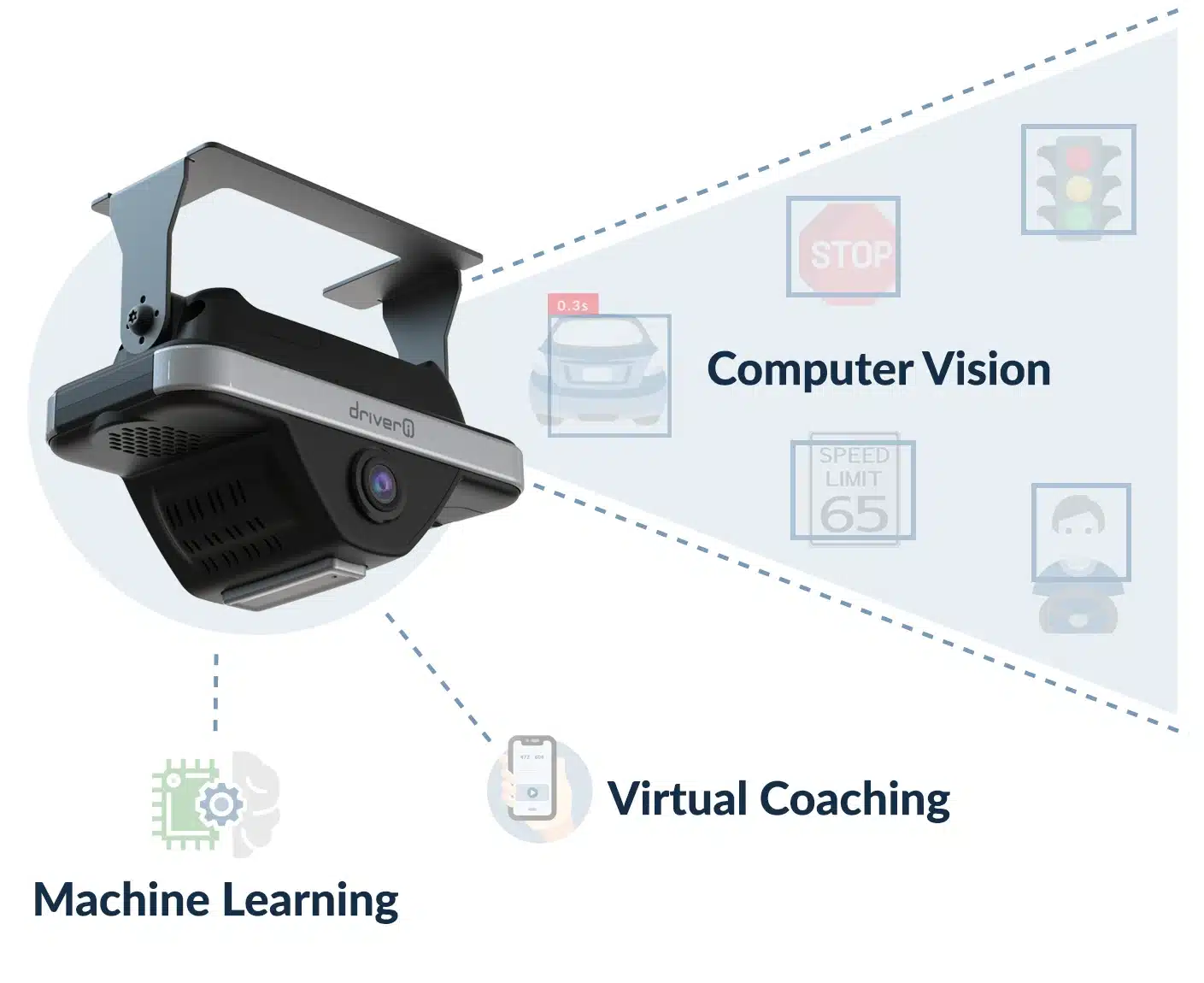
Dash Cam AI vs. Generative AI
The adoption of artificial intelligence (AI) has more than doubled over the last five years as the number of AI capabilities companies invest in and leverage has risen from 1.9 in 2018 to 3.8 in 2022. While robotic process automation and computer vision are organizations’ most deployed capabilities, many are setting their sights on generative AI as its newest tool, Chat GPT, gains traction and popularity in nearly every industry.
While generative AI chatbots like ChatGPT are popular, they aren’t the only kind of AI businesses heavily leverage. Generative AI focuses on creating new content based on existing patterns, but dash camera AI utilizes computer vision to analyze visual data for safety and surveillance purposes.
Generative AI and the type of AI used in dash cameras are two distinct branches of artificial intelligence that serve different purposes. This blog will delve into these two branches’ characteristics, methodologies, and applications, highlighting their unique contributions to AI.

Generative AI: Unleashing Creativity through Data
Generative AI can produce original outputs such as images, music, or text that resemble human-created content. Generative AI models generate fresh and novel content beyond mere replication by identifying patterns and structures within the training data.
Chat GPT was introduced to the world in November 2022, and since then, people (students, professors, Fortune 500 companies, etc.) have used it to do all kinds of things, from writing cover letters to composing emails in multiple languages. Its popularity stems from the fact that Chat GPT is generative AI, which means it can generate original content on nearly anything it’s asked or told to do. For example, college professors can use it to grade papers. All they have to do is input the work and ask the chatbot to assess it.
Dash Camera AI: Visionary Insights for Safety and Surveillance
Dash camera AI operates in the realm of computer vision, utilizing object detection techniques to analyze real-time video footage captured by dash cameras. With the ability to identify and track objects of interest, such as vehicles, pedestrians, or road signs, dash camera AI enables various functionalities, especially in fleet operations. Smart dash cams can reduce the costs associated with insurance policies and claims for fleet operators, and they can save lives by monitoring driver behavior by deploying lane departure warnings and collision avoidance systems.
By interpreting visual information, dash camera AI enhances safety and surveillance, providing valuable insights to drivers and fleet operators by employing computer vision techniques, including object detection and tracking algorithms, to analyze visual data in real time. At GPS Insight, our technology offers intelligent automated reporting to advocate for the safety of fleet drivers rather than as a tool to ‘spy’ on them.

GPS Insight dash cams can help identify and correct unsafe driving behaviors like speeding or harsh braking and provide evidence in case of accidents or incidents, protecting both the driver and the company. In addition, our forward-thinking tools are built on powerful AI, industry-leading computer vision, and edge computing to rapidly view everything on the road to assess potential safety issues like traffic light violations, hard acceleration, and anything else that can cause an accident so potential harm is eliminated before it begins.
Key Differences
While generative AI and dash camera AI serve distinct purposes, there is potential for convergence and collaboration between these branches. For example, generative AI can enhance the realism and diversity of synthetic training data used to train dash camera AI algorithms. This can lead to improved object detection and tracking capabilities, ultimately strengthening the accuracy and reliability of dash camera systems.
In addition, generative AI can contribute to developing simulated environments for testing and training dash camera AI algorithms. By generating synthetic data that mimic real-world scenarios, generative AI aids in the creation of robust and comprehensive training sets, allowing dash camera AI algorithms to handle various challenging situations effectively.
Generative AI and dash cam AI exemplify the diverse capabilities of artificial intelligence. While generative AI stimulates creativity and generates new content, dash camera AI enhances safety and surveillance through real-time visual data analysis. Understanding these branches’ unique objectives and applications helps us appreciate their distinct contributions to the safety and growth of commercial fleet operations. As technology progresses, we may witness further convergence and collaboration between these AI tools, driving innovation and expanding the horizons of artificial intelligence.
Get a Price Quote
Ready to see how the Driveri dash cam system can work for your fleet?





